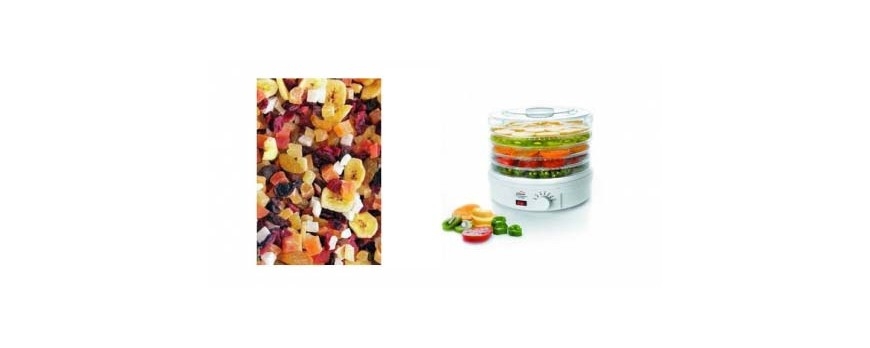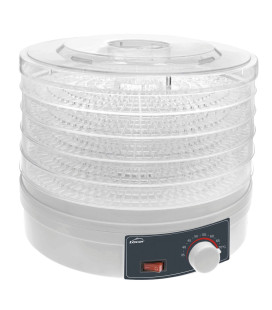No products
Prices are tax included

Food Dehydration
Dehydration is to remove water or moisture from food to preserve: the organisms that cause decomposition can not develop in the absence of water. You can dehydrate all kinds of food, from fruits or vegetables (including flowers, herbs and medicinal plants) to meat, fish, fresh pasta, algae ... or a mixture of vegetables to make soup. Besides the dehydrator returns the crunchy texture to cookies and bread, helps to ferment the dough ...
Dehydration perfectly preserves the nutritional qualities of food, since when working with little elevated temperatures only water is lost and remain intact proteins, vitamins, minerals ... It also offers some interesting features in the kitchen foods retain their aroma and a large percentage of their color and appearance, taking a lighter consistency; the flavors are concentrated and intensified: fruits become the focus candy sugar; can get different textures playing with different degrees of dehydration, from crispy chips (we recommend using for cutting the Lacor mandolins you can find on our page) to type textures "gummy" as the apricots; healthy and easy snacks can be developed to take to work or hiking; or spraying dehydrated food for use as condiments; and, of course, they can re-hydrate. Economically, you can leverage the purchase of season discounts to enjoy throughout the year, or take advantage surplus own.
Use an electric dehydrator is simple. Its operation is based on generating a gentle heat and prolonged circulating between the perforated trays inside where food is stored. For best results one should keep in mind a few simple rules: the lower trays are suitable for thicker slices, meat or fish, and higher for more delicate foods; must not overlap the pieces should be left to air circulation space; in each tray food should be the same size. Dehydrated should be stored in suitable containers, that are not damaged by humidity.
Dejar un comentarioLeave a Reply
Blog categories






